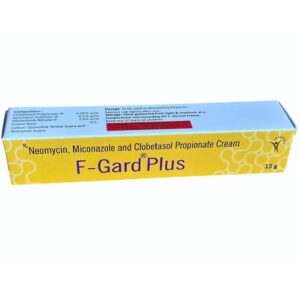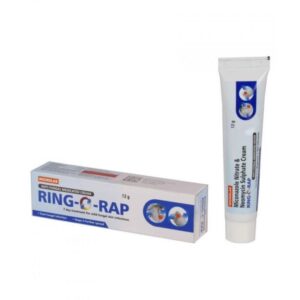NEOMYCIN + MICONAZOLE
Neomycin: Neomycin is an antibiotic drug that is commonly used to treat bacterial infections. It belongs to the class of aminoglycoside antibiotics and is effective against a wide range of gram-negative bacteria.
The mechanism of action of neomycin involves inhibiting protein synthesis in susceptible bacteria. It accomplishes this by binding to the 30S ribosomal subunit and interfering with the initiation complex formation, thereby preventing the addition of amino acids to growing peptides.
Neomycin is primarily used topically to treat or prevent bacterial infections of the skin, eyes, and ears. It is also found in combination with other drugs for the treatment of intestinal infections. Occasionally, it may be given orally in certain cases like hepatic coma to suppress the intestinal bacteria that play a role in the pathogenesis of hepatic encephalopathy.
The dosing of neomycin may vary depending on the condition being treated. When used topically, it is usually applied directly to the affected area two to three times a day. For intestinal infections, it is typically taken orally in a dose of 0.5-1 gram every 6 hours for a duration of 7-10 days.
Like any medication, neomycin can have side effects. When used topically, it may cause local irritation, rash, or itching. When taken orally, it can cause gastrointestinal side effects such as nausea, vomiting, diarrhea, and stomach cramps. In some cases, neomycin can also cause hypersensitivity reactions, hearing loss, and kidney damage, especially if used for prolonged periods or at higher doses. It is important to note that neomycin should not be used in individuals with known allergy or hypersensitivity to aminoglycoside antibiotics.
As with any prescription drug, it is essential to consult a healthcare professional before using neomycin to ensure proper usage, dosage, and evaluation of any potential risks or contraindications.
Miconazole: Miconazole is an antifungal medication used to treat various fungal infections. It is available in different formulations, including creams, powders, sprays, and oral gel.
The main mechanism of action of miconazole is by inhibiting the synthesis of ergosterol, a key component of fungal cell membranes. This disruption weakens the cell membrane and leads to cell death. Miconazole is effective against a wide range of fungi, including Candida species, dermatophytes, and some strains of Malassezia.
The recommended dose and duration of treatment may vary depending on the specific condition being treated and the formulation of miconazole being used. It is important to follow the instructions provided by the healthcare professional or the medication’s labeling.
As with any medication, miconazole can cause side effects. Common side effects of miconazole cream or powder include skin irritation, redness, itching, and a burning sensation at the application site. These side effects are generally mild and usually resolve on their own. In rare cases, more severe allergic reactions may occur, such as swelling, difficulty breathing, or rash. If any concerning side effects occur, medical attention should be sought immediately.
Miconazole oral gel, when used for oral thrush, can cause nausea, vomiting, stomach pain, diarrhea, and headache. It is important to rinse the mouth with water after using the gel to prevent swallowing a large amount of the medication.
It is always advisable to consult a healthcare professional before using miconazole or any other medication to ensure proper usage, dosage, and to discuss potential side effects or interactions with other medications.


